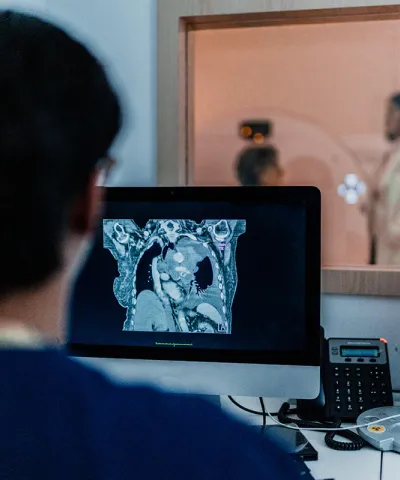In July, the Economic Committee for Health Products (CEPS— the French price negotiation payer body), the National Union of the Medical Technology Industry (Snitem— the main French Medtech industry association), and other organizations representing medical device players signed a new framework agreement. This comes 10 years after the previous agreement expired and after over three years of negotiations. Valid until July 2027, this agreement sets the key rules, principles, and considerations that govern how the CEPS determines the price deserved by medical devices and services for individual use at launch and over time.
Our experts take a closer look at some of the key takeaways for the Medtech industry from this new framework agreement.
1. Medtech companies are now involved in the conventional policy monitoring and can attempt to shape it.
The new framework agreement indeed establishes a monitoring committee for the medical device conventional policy (CSPC).
This brand-new committee aims to address any topics that contribute to the further development of the conventional policy for products and services listed on the List of Products and Services (LPP). It serves as a forum for exchange and consultation on sector developments and expenditure monitoring.
Among other responsibilities, it must propose policy measures that could favorably impact the sustainability of the healthcare system, ensure (continued) access to products and services listed on the LPP, and promote the localization of production within the European Union and France in particular. The committee comprises representatives from the CEPS (products and services section) and from the other signatories of the framework agreement. It will meet at least twice a year.
The committee gives Medtech manufacturers an opportunity to monitor the proper implementation of the framework agreement but also to shape the conventional policy continuously. It also provides better visibility on potential adjustments to the CEPS doctrine.
2. Medtech players have more formalized interaction opportunities with CEPS and HTA bodies than in the past to optimally prepare for price negotiations and post-registration data collection.
Whether it is for a first application to reimbursement or for a renewal, Medtech players can request an early meeting (“rencontre anticipée“ or “rencontre pré-dépôt“) with the CEPS General Secretary (SG CEPS).
- The only eligibility condition for such a meeting is that the products or services discussed need to lack a relevant comparator or to have significantly evolved in their relative performance vs. their comparators since the first registration.
- These discussions provide Medtech players an opportunity to make CEPS aware of their own pricing aspirations and of their justification for them. They also give CEPS an opportunity to share directions on how it may approach the price negotiation when the time comes.
Chapter 2 of the new framework agreement defines the process for collecting additional data on products or associated services post-registration.
- The National Committee for the Evaluation of Medical Devices and Health Technologies (CNEDiMTS) and the Economic and Public Health Evaluation Committee (CEESP) can request additional data collection post branded registration to ensure patients have access to new technologies. This data collection may be conducted through an observational study, a secondary database study, or a post-marketing surveillance registry to ensure reimbursed technologies carry controlled risks.
- The framework agreement clarifies the roles of the parties and flow of the tripartite meeting with CEPS, CNEDiMTS and/or CEESP. In this meeting, the manufacturer gets a chance to present their post-registration study plan. All parties assess its feasibility based on estimated costs, timeline, applicability, and reproducibility. Penalties defined by CEPS may be imposed on the manufacturer in case of non-compliance with commitments taken in the meeting.
- Finally, a preliminary meeting (“réunion préalable“) to the tripartite meeting can be requested by manufacturers to clarify the post-registration data requested by payers ahead of the official meeting.
In a nutshell, there will be more interaction options with CEPS and other HTA bodies. The content and expected output of these meetings are much clearer than they used to be.
3. While a premium vs. comparator was only possible with an ASA I to III, it becomes feasible with an ASA IV; and while, with an ASA V was expected to generate cost savings, parity becomes possible.
In its 2022 activity report, the CEPS described its doctrine as follows: the ASA (“amélioration du service attendu“ — expected service improvement) score awarded by the CNEDiMTS is the key driver of price potential. Devices awarded an ASA I to III can benefit from a price higher than their comparator, ASA IV devices can achieve price parity, and ASA V must generate cost savings to be reimbursed.
The new framework agreement brings clarity and formalizes situations that could be accepted in certain cases. The impact of ASA ratings on price potential now includes the possibility to obtain a price higher than the comparator for ASA IV devices or the possibility to obtain price parity for ASA V devices under clear conditions (e.g., ASA V vs. recently launched comparator with an ASA I to III or positive CEESP outcomes). In addition, the framework agreement sets forth conditions for price stability and outlines the criteria justifying price reductions which were not specified in the previous version of the agreement.
In short, price setting rules are now more transparent and more consistent for manufacturers.
4. “Groups of similar products” will inevitably erode in price over time but under clearer rules.
While the entry of a second player in a category can trigger the creation of a generic LPPR reimbursement line, it is not always the case. Especially in categories where other entrants are expected in the near future (e.g., continuous glucose monitoring sensors), allowing products to hold branded codes enables the CEPS to negotiate with each manufacturer separately to minimize budget impact for the healthcare system at the category level.
Article 15 of the framework agreement defines groups of similar products within the same tariff category as ’products listed for reimbursement under a brand name, which have received an identical evaluation from CNEDiMTS in terms of indication labeling, evaluated population size, place in therapeutic strategy, etc.’ A new device entering such a group of similar products may, depending on the case and manufacturer expectations, be listed with or without a discount on pricing conditions vs. incumbents.
If listed without a discount, the group of similar products within the same category will be included in a price reduction plan to ensure the increased competition in the category translates into price erosion. If the new entrant is listed with a discount, a similar discount is proposed to all products in that group within six months of the new entrant’s listing. Nonetheless, it is expected that CEPS will require a price decrease in line with the lower-priced new entrant when the products are up for renewal.
These changes grant Medtech players active in such categories better visibility on upcoming price reductions.
5. Manufacturing in France or the European Union is now rewarded through better pricing conditions and financial incentives.
The Medtech IRP rules outlining how CEPS considers reimbursed prices in the UK, Germany, Italy, and Spain in its price potential determination approach for a new device have always been relatively informal, unlike in the pharmaceutical industry where IRP rules are formally established. Medtech IRP rules aimed at keeping French prices “in line with those in place in these comparable markets“ as per the 2022 CEPS annual report.
However, for Medtech products with an ASA rating of I to III and at least 50% of added value manufactured in France, the IRP rules are now clearly favorable: the French price cannot be lower than the highest price in any of these four markets.
The new framework agreement also extends the system of credits for discounts granted to manufacturers, known as “CSIS credits“, which reward investments in the European Union to medical devices. A revision of the scheme, including a doubling of its amounts and its expansion to the medical devices sector, had been promised as part of the “Healthcare Innovation 2030“ plan and is now integrated in the in the framework agreement.
6. Medtech players can request a price increase under certain conditions.
The recent inflationary economic environment has triggered a paradigm shift in the way CEPS looks at price increases. The only way forward is no longer down.
Article 23 of the framework lists the conditions under which a manufacturer can request a price increase for a product or service already listed under a branded LPP code. Among the primary conditions, the device must address a need not met by any treatment alternative, be able to demonstrate a cost increase impacting its manufacturing expenses, and guarantee supply continuity in the French market.
Conclusion
The next three years will reveal if and how these developments materialize in practice. In the meantime, the Medtech industry has a clearer playbook for approaching price negotiations in France. It is worth noting that several elements of this new framework agreement for medical devices appear to have been inspired by the existing framework agreement with CEPS for drugs. This may indicate a trend towards a more unified approach to drugs and medical devices pricing by CEPS in the future.
Our experts at Simon-Kucher can help you unlock your pricing potential both at launch and over time, and both strategically (long ahead of dossier submission) and optimally prepare for price negotiations.
Act today to elevate your pricing strategy. Contact us to learn more.



